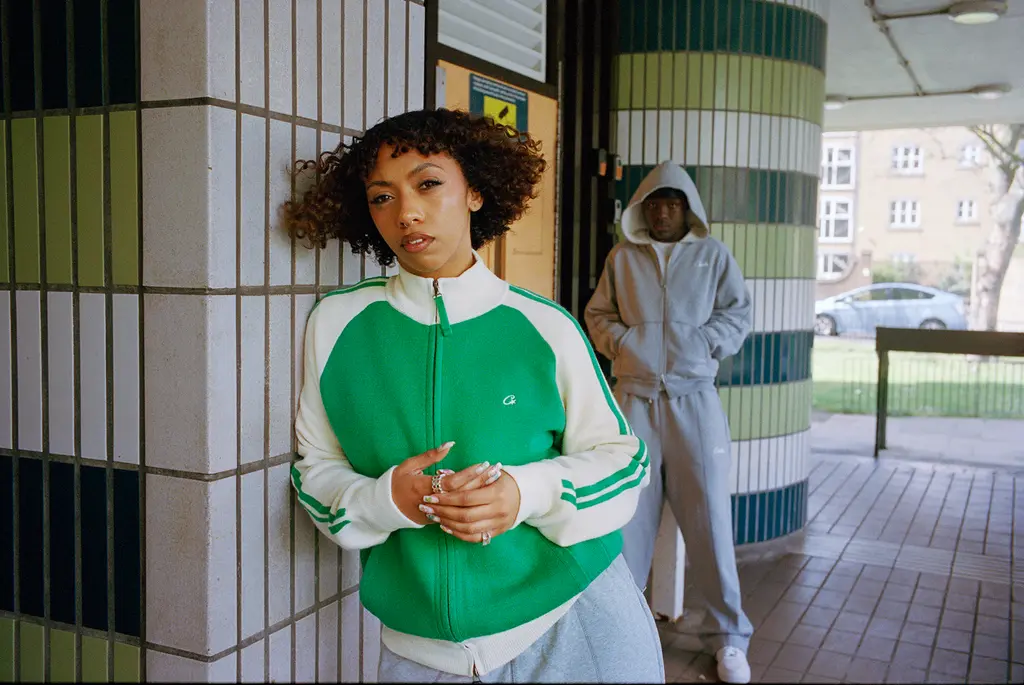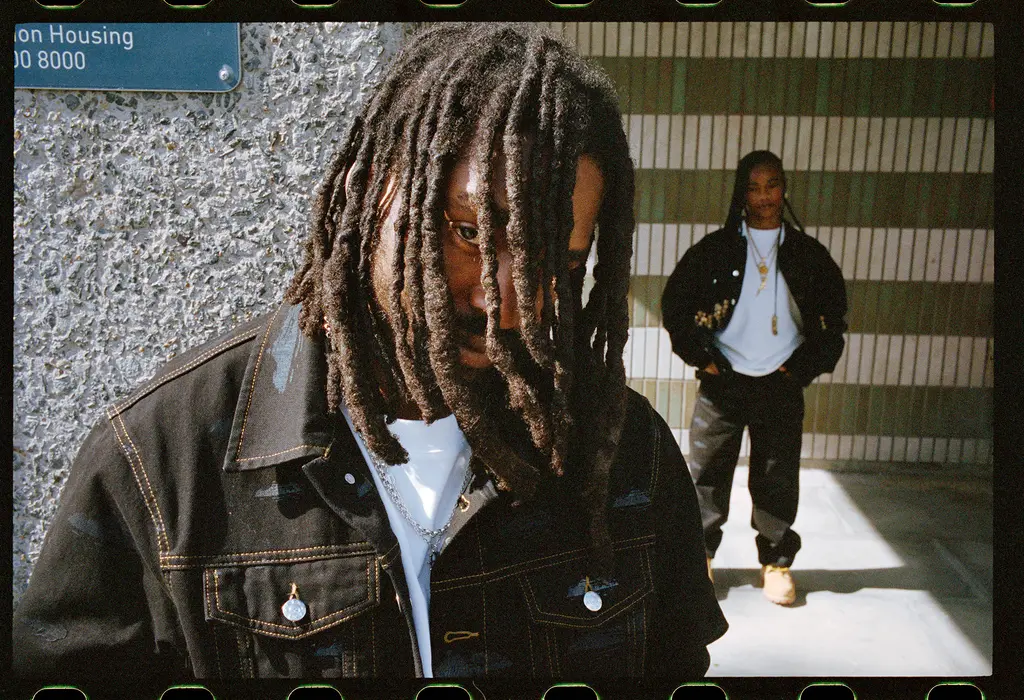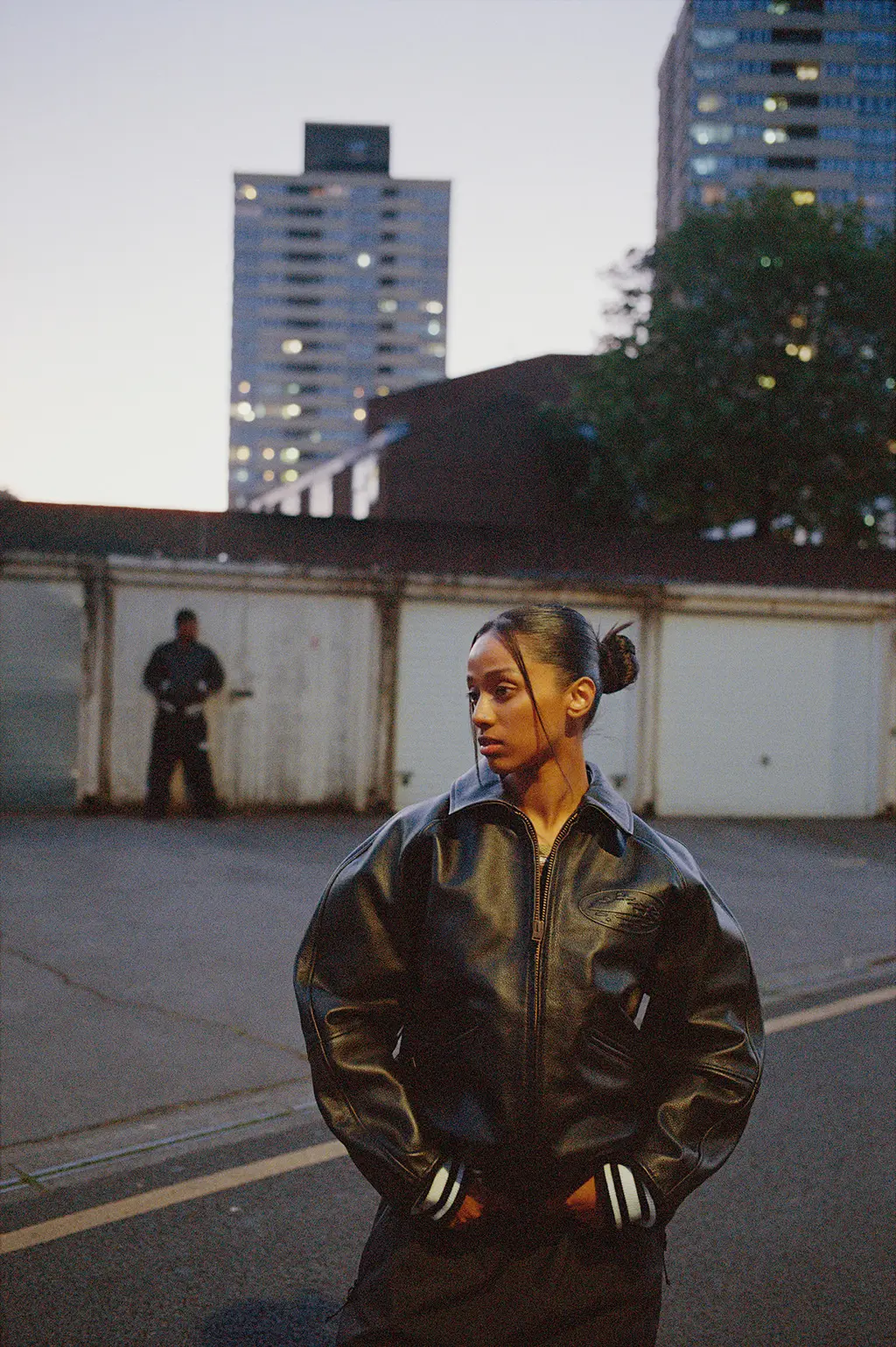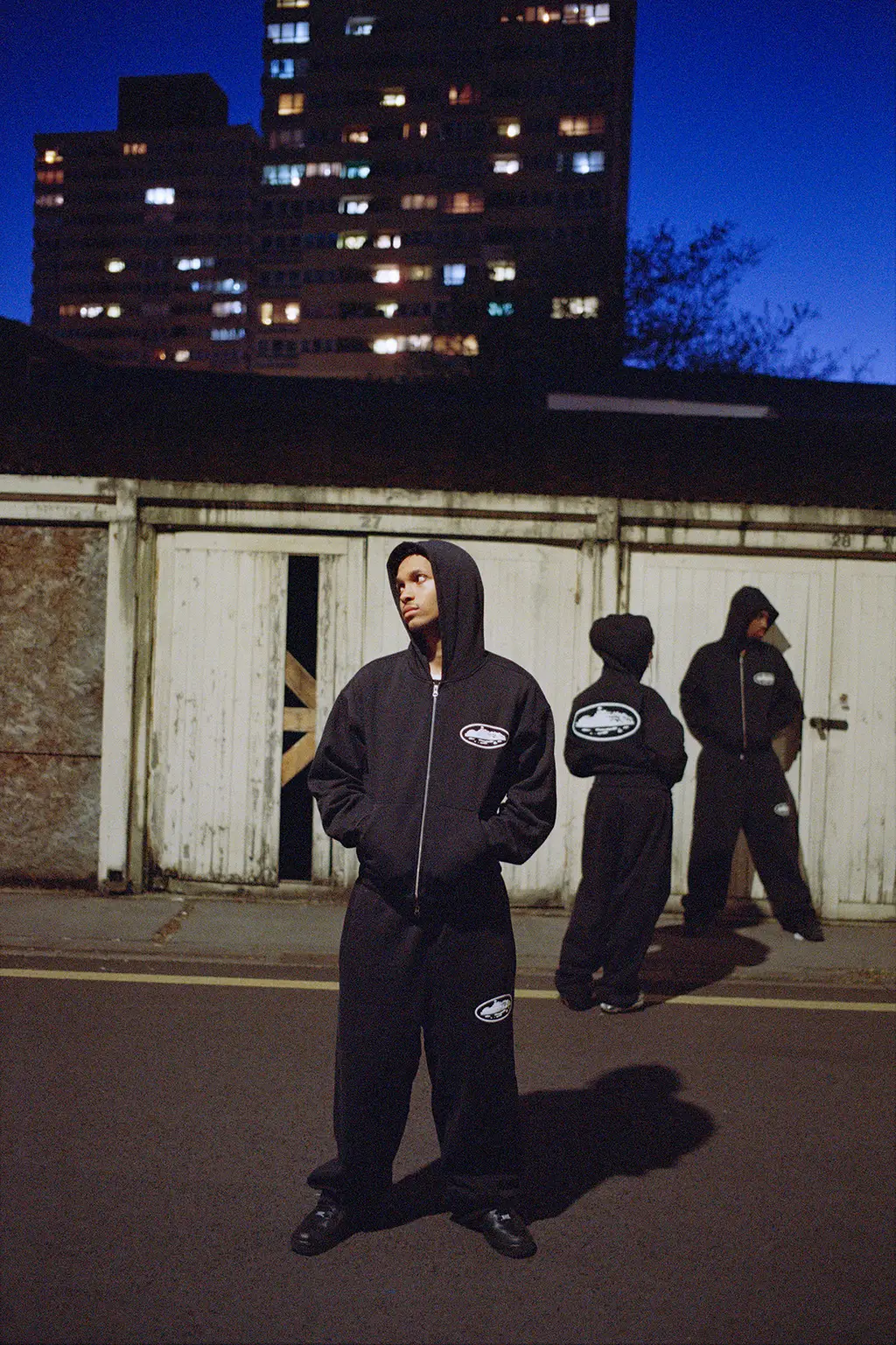Grime photographer Simon Wheatley on his Corteiz collaboration

The snapper captured scene legend MC Crazy Titch back in 2004. Now, the image is featured on a new jacket from Clint’s maverick label.
Picture the scene: 20 years ago, Simon Wheatley was close to being mauled by a dog.
He was in a park in Stratford, East London, photographing legendary grime MC Crazy Titch. Wheatley – one of the most revered documentarian of the grime scene between 1998 and the mid-2000s – had met Titch the day before at a recording studio in West London, where he was taking his portrait for now-defunct RWD magazine. But that setting, in that corner of the city, didn’t feel quite right.
Wheatley had done plenty of photo sessions in studios, East London tower blocks and raves with scene pioneers Wiley, Kano and Dizzee Rascal. Now, with Titch, he wanted something equally real.
“So I asked Titch if I could just come to where he’s from,” Wheatley recalls, a request that resulted in their Stratford rendezvous. “He was waiting for me in the park, and his dog was there. Me being me, I tried to be friendly with the dog. Turns out the dog didn’t like people being friendly… It started to switch on me.”
Moments before the picture was taken, Titch was tightly holding the leash of the dog as it tried to jump up to Wheatley. He got the shot, a second before the pooch bit a chunk out of his trousers. Now, that 2004 image is at the heart of the latest collection from maverick streetwear label Corteiz, as an all-over print on a stellar ski jacket. It’s one of Wheatley’s rarer photos, not included in his definitive book, Don’t Call Me Urban!, originally published in 2010. But two decades onit’s been dusted off for a new generation, in enigmatic Corteiz founder Clint’s homage to the golden age of grime.


Hey, Simon. When did you first meet Clint?
I first met Clint at an Unknown T studio session a couple of years ago. I didn’t know who he was but he said to me: “Are you Simon Wheatley? I messaged you on Instagram.” So I went through my messages and I remembered this guy who said he wanted to get my book, Don’t Call Me Urban!. I felt bad because he’d spent a lot of money [buying the book from a reseller]!
So you didn’t know about Corteiz at the time?
I had no idea when I first met him. So that was our first encounter… Then I met his manager as well. We got in touch with each other, and he looked through my hard drive of images [that] I was collating for a new edit of Don’t Call Me Urban!. That was the first time we really sat down and got together, by which time I knew who he was.
How did the collab happen?
I heard that he wanted to make a collab with me and I wasn’t sure what that meant at all. Then he said he wanted to use the Crazy Titch picture.


You have a huge archive of images to choose from. Do you know why he chose this one?
I really don’t know. But I found it very interesting that he chose that image and, in retrospect, it just shows what a visionary that guy is. That picture isn’t in the first edition of Don’t Call Me Urban!. He didn’t just resort to the known. He had some kind of vision of a piece of clothing that he told me he wanted to make a jacket out of. So many people want to put a picture on a piece of clothing and it’s just too easy. But this jacket is really, really good.
So, you’re in a park in Stratford about to get a shot of Crazy Titch. What do you see?
The first roll of film I shot that day was just Titch sitting on the bench with the dog. And then I thought: “Why don’t I get more of an action picture with this dog?” I measured up where I stood, where at the end of the lead the dog would just be out of reach, and said: “I want you to let the dog come up to me.”
Were you scared?
The dog wanted to get me. If you look at the photo, you can see the tension in Titch’s arm. I said: ‘Do not let go of that dog! Every time I’d [crouch] down, the dog would jump, and I’d snap. Then I’d step back again and I had that distance point marked. On the last frame the dog actually got me, but it just got the back of my pants. I’ve always wanted to repair that pair of trousers. They’re a pair of grey Agnès B trousers.
Do you still have them?
Yeah, I’ve still got them. I remember taking them to India when I was living there and I thought I’d fix them there. But I never got around to it. I think I’ll always keep them with that rip at the back.
What else happened that day?
We were sitting on the staircase in the block, and some old East End geezer had come down the stairs and patted the dog on his head. The dog turned around and bit the man’s hand. Then the daughter of this man had come out and obviously been shocked by what happened. Next thing she’s calling the police, so we got out of there.
You spent a fair bit of time with Titch. What do you remember about him from back then?
I knew Titch as someone who looked after his youngers. He had a caring attitude towards them – he wasn’t just in it for himself. I didn’t know him very well, but I knew him as that guy. In the youth clubs, he was the MC that was most highly rated. People would say Titch’s bars are the realest. He was the one that everyone looked up to. And I think that if he’d have not gone to jail, that he would have ruled the streets.
You must get asked for photo usage all the time. Why did this feel right?
Over the years I have been asked to give my pictures for various things, but they didn’t make sense. But when Clint came to me, he told me that he felt the younger generation need to be seeing my work. He wanted to do a collaboration for that reason. There’s only 300 of these jackets made. He could have made 1000 and sold them out quickly and made more money. But it’s not about that for him.
What do you miss about the grime scene?
I miss going to some block with a bunch of guys, waiting to be let in,going into an apartment where there’s mess everywhere, and people just do their thing for an hour or so and then leave. I miss that mystery and adventure.
Looking at the various music scenes in London now, what are the most noticeable changes?
Things are a lot more organised nowadays. Victory Lap, for example, is very different from the pirate radio environment. It’s a very good place to see the changes because they’re attracting interest from sponsors, they’re very friendly, whereas pirate radio was covert and subversive. With Corteiz, someone like Clint, he’s got a natural edge to him. And the way he works, he’s got such clear vision. In a way, he reminds me of that original grime environment, the way he goes about things. He is quite secretive, too, in the way he operates. He has that spirit of grime about him.





